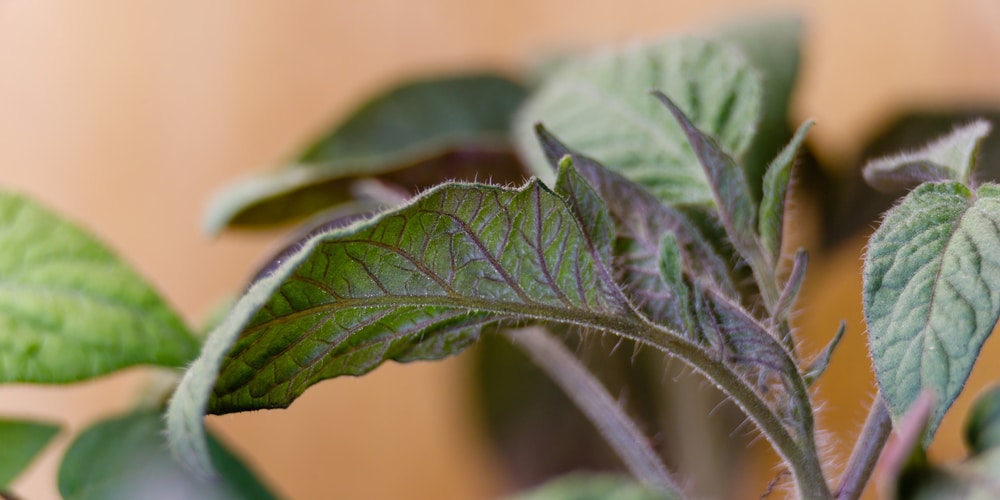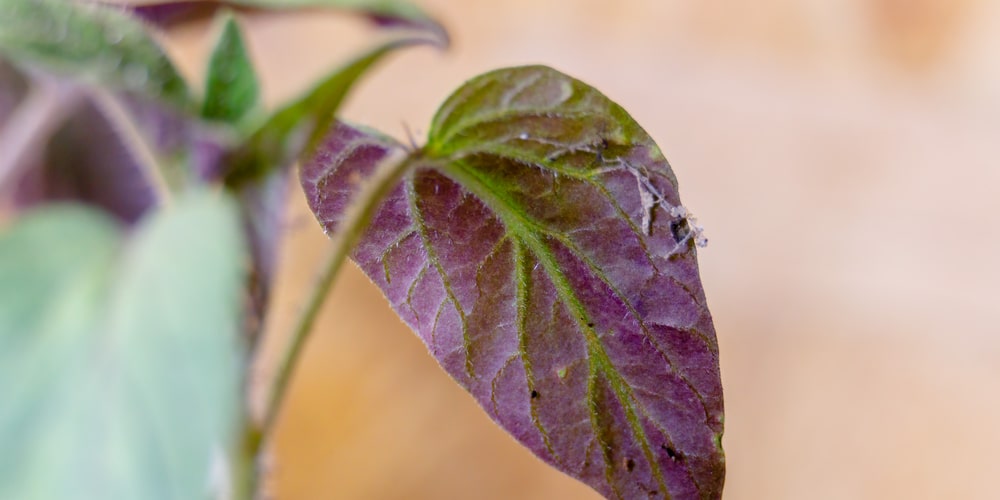Tomatoes are one of the most popular veggies to grow in one’s garden. After all, under the ideal climate conditions, these plants don’t require much attention and tend to be highly prolific.
You can grow them starting from seeds, but don’t forget that tomatoes are warm-seasoned crops that enjoy the heat and the sun. Such plants won’t survive frosts, so avoid exposing them to outdoor conditions too early.
But what if you notice purple leaves on tomato seedlings? Should you get worried about it? And what’s causing such a condition? If these questions haunt you, don’t worry: you have landed in the right place to satisfy your curiosity!
Why Do Tomato Seedlings Turn Purple?

While some tomato varieties have purple foliage, most tomato leaves’ are dark green. So, tomato seedlings turning purple isn’t “normal.” However, that doesn’t mean you cannot solve the issue.
To begin with, you must identify what is causing the leaves on your tomato seedlings to turn purple. More often than not, this type of discoloration is a symptom of stress or nutrient deficiency. Usually, plants lacking magnesium, phosphorous, or potassium will start displaying purple seedlings. Additionally, some diseases and pest infestations might cause the same problem.
Usually, purple stems on seedlings with no plants are common problems and don’t require measures. They’ll disappear as the plant grows. However, you will have to fertilize your plants if the leaves appear on the bottom.
The good news is that you’ll be able to revert your plants to their natural color. However, you’ll have to take proper action depending on the root cause. Jump to the following sections to learn how to do so.
Improve the Nutrient Content
Nutrient deficiencies are the most common reason for leaves turning purple in tomato plants. You can do a soil test to understand how to amend your ground to accommodate your plants and recreate the ideal conditions for their growth.
Don’t forget that young tomato plants can’t absorb potassium from cold soil, meaning they might turn purple. Revert potassium deficiencies by feeding your plants with a suitable product.
If the ground is low in phosphorous, add a fertilizer or bone meal. You can treat magnesium deficiencies with a foliar feed (spraying the leaves with an adequate liquid product).
Keep in mind that you should fertilize your plants only when they have at least two leaves. Still, to prevent burning them, use your products at half-strength.
Check the Lighting
Your seedlings will thrive in indirect light, and they might get burned by too much sunlight. You must choose a suitable location to grow them, with adequate lighting and temperature conditions. Also, don’t forget to protect them from the scorching sun rays.
If you are growing your tomatoes under grow lights, ensure they are not too strong. Don’t worry: this is a common problem with LED white lights. Purchase dimmable bulbs and increase the intensity only during the flowering stage.
Keep an Eye out For Infections and Pests
Some viral infections can cause your tomato seedling’s leaves to curl. Sometimes, they can also turn purple. Take prompt action in such a situation as it may result in stunted growth. If you notice purple veins on the back of your plant’s leaves, you are probably dealing with attacks from pests such as beet leafhopper or other diseases. Prevent this by applying row covers and quickly removing affected plants to minimize spread.
Should You Worry About Purple Leaves?
Tomato seedling leaves turning purple is a common problem, especially for those that grow indoors. Also, because the issue is easily reversible, you shouldn’t worry too much about it.
However, we recommend you take action as soon as you notice something off with your plants to avoid issues in the future. Also, do not plant your tomatoes too early, as cold temperatures might kill them.
Related Article: 4 Reasons Why Your Pepper Seedlings Are Turning Yellow
